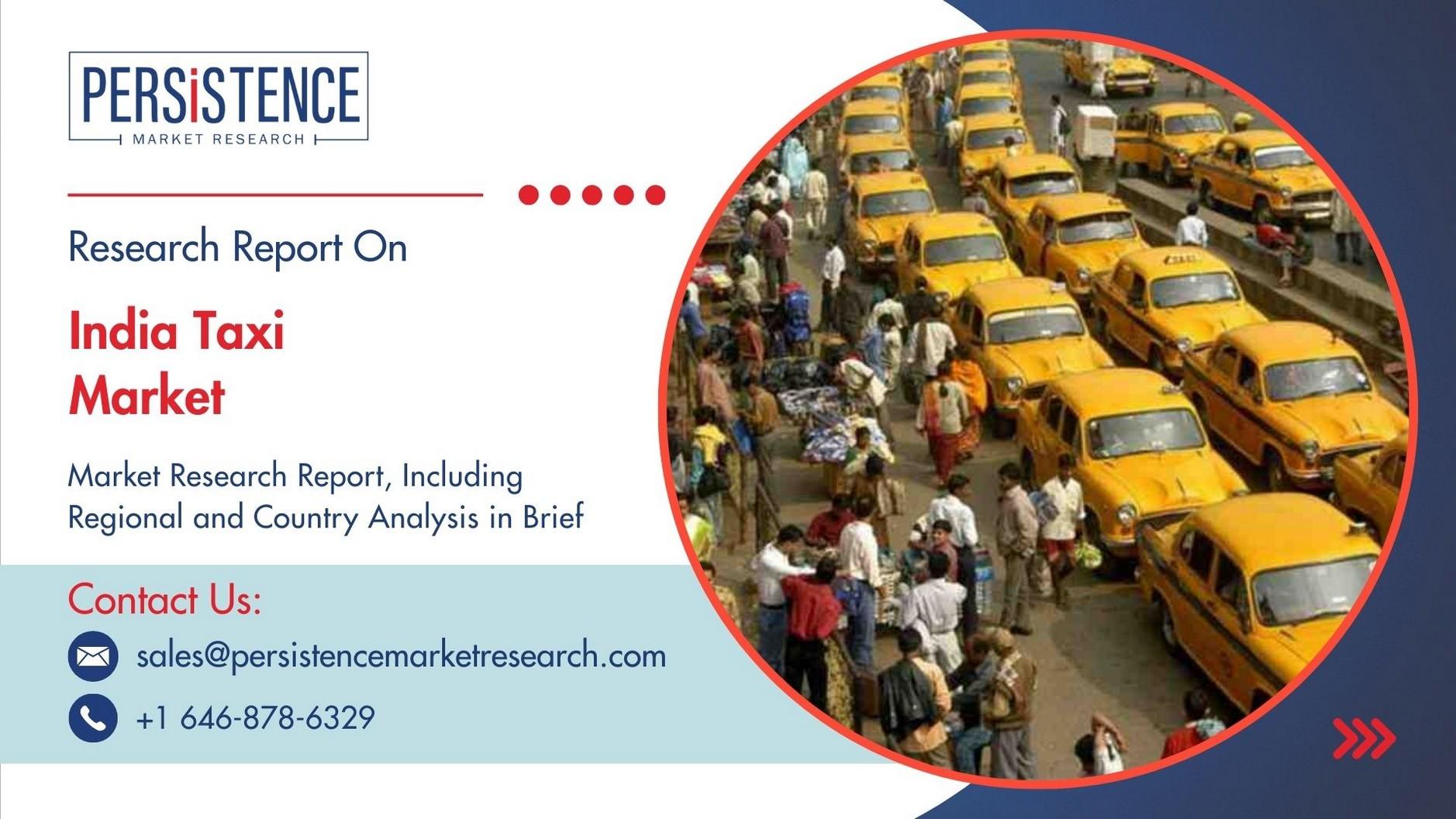India Taxi Market: The Impact of Global Trends
The global taxi market is undergoing a monumental transformation, and India is no exception. With rapid technological advancements, changes in consumer behavior, and a shift towards more sustainable transportation options, the Indian taxi industry is experiencing a period of growth and evolution. According to a recent report from Persistence Market Research, the India taxi market size is projected to increase significantly, from US$ 21,071.7 million in 2025 to US$ 44,303.1 million by 2032. This represents a compound annual growth rate (CAGR) of 11.2% during the forecast period from 2025 to 2032. This impressive growth trajectory is a reflection of the dynamic changes occurring in the global market and their direct influence on India’s taxi sector.

The Rise of Ride-Hailing Services
One of the most influential global trends impacting the Indian taxi market is the explosive rise of ride-hailing services. Companies like Uber, Ola, and Lyft have revolutionized the way people access transportation, both in India and around the world. The convenience of booking a ride with just a few taps on a smartphone, coupled with transparent pricing models and door-todoor service, has caused a major shift away from traditional taxi services.
In India, the rapid growth of smartphone penetration and internet connectivity has further fueled the demand for ride-hailing services. According to a report by Statista, India is projected to have 1.1 billion smartphone users by 2026, up from 750 million in 2021. This expanding digital infrastructure has played a pivotal role in the growth of platforms like Uber and Ola, which have attracted millions of users across cities and even rural areas. As these platforms grow in popularity, they are not only providing a new level of convenience for consumers but also reshaping the competitive landscape for traditional taxi operators in India.
Furthermore, the rise of ride-hailing services is also contributing to the increasing demand for multi-modal transport options. Consumers today seek flexibility in how they travel, whether that means opting for an Uber ride, using public transport, or even sharing a ride with others. This shift towards integrated transportation networks is becoming a significant feature of
India’s taxi market, influenced heavily by global trends in urban mobility and digital transportation.
Technological Advancements: The Shift to Electric and Autonomous Vehicles
Another critical global trend that is starting to make an impact on the Indian taxi market is the rapid adoption of electric vehicles (EVs) and the ongoing developments in autonomous vehicle technology. The global push for environmental sustainability and reduced carbon emissions has driven the demand for EVs, and India is beginning to follow suit.
India’s government has introduced various initiatives to promote the adoption of electric vehicles, including subsidies and tax breaks for both manufacturers and consumers. As a result, several taxi fleet operators in India have begun transitioning their fleets to electric models, aligning with the global trend of reducing emissions from traditional combustion engine vehicles.
In particular, ride-hailing companies like Ola and Uber have made significant strides in incorporating electric vehicles into their fleets. Ola Electric, for example, has already launched an electric scooter service in India and is aiming to build a fully electric fleet for its ride-hailing platform. Uber has committed to transitioning to 100% electric vehicles by 2030, and it is already beginning to roll out EVs in major Indian cities like Delhi and Bengaluru.
This trend towards EV adoption is expected to accelerate in the coming years, with more taxi operators in India likely to embrace electric vehicles as a cost-effective and eco-friendly solution. Additionally, the expansion of EV charging infrastructure, which is gaining momentum both globally and in India, will further enhance the feasibility of electric taxis. The global drive towards electric mobility is undoubtedly shaping India’s taxi market, creating new opportunities for innovation and growth.
In parallel with electric vehicles, autonomous vehicle technology is also a global trend that has the potential to reshape the taxi industry in India. While autonomous vehicles are still in the testing phase in many parts of the world, India is already exploring the possibilities of integrating driverless cars into its transportation network. The rise of driverless technology could dramatically reduce operational costs for taxi operators and improve safety and efficiency in the long term. However, challenges such as regulatory approval, infrastructure readiness, and consumer acceptance will need to be addressed before autonomous taxis become a widespread reality in India.
The Role of Sustainability and Green Initiatives
Sustainability is not only a global trend influencing the taxi market in India but also a growing consumer demand. As awareness of climate change and environmental issues continues to rise, consumers are increasingly seeking eco-friendly and sustainable transportation options. This shift in consumer preferences has led taxi operators to consider environmentally friendly alternatives, including electric vehicles, hybrid models, and the integration of renewable energy sources.
Globally, there is also a growing trend of cities implementing stricter regulations around air pollution, fuel emissions, and carbon footprints. Indian cities like Delhi, Mumbai, and Bengaluru have experienced significant air quality challenges, and as a result, local governments are starting to implement stricter emission norms and promoting electric vehicle adoption. The central government’s push for electric mobility through policies like the Faster Adoption and
